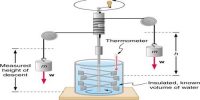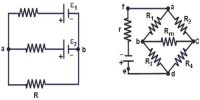In 1896, French scientist Henry Becquerel observes that a radiation with special penetrating power emits spontaneously from the nucleus of Uranium metal in a continuous manner. He also observes that the element that emits radiation, transforms totally into a new element. This is a nuclear event. This event is a spontaneous and continuous phenomenon and fully controlled by the nature.
Any manmade external influences such as- pressure, heat, electric and magnetic field cannot stop or increase or decrease the emission of these rays. Later Madame Marie Curie (1867-1934) and her husband Pierre Curie (1859-1906) observed the similar events. They noticed that similar type of radiation also emits from the heavy elements like Polonium, Thorium and Actinium etc. This radiation is now-a-days known as radioactive rays.
The phenomenon of emission of radioactive rays or particles from an element is called radioactivity. Radioactive elements emit three energetic rays, namely alpha, beta and gamma. As a result they transform into lighter elements by the process of disintegration. As the Radium metal transforms into Lead step by step through radioactive disintegration. The unit which is used to measure radioactivity is named Becquerel.














